
Visually one village, certainly neither myself or my friend noticed where one finished and the other began! Interestingly enough they are one parish now. However it was not always so as the two places are seperated by the Broadwell Brook and Filkins never had its own church until the nineteenth century, being part of the parish of Broadwell.
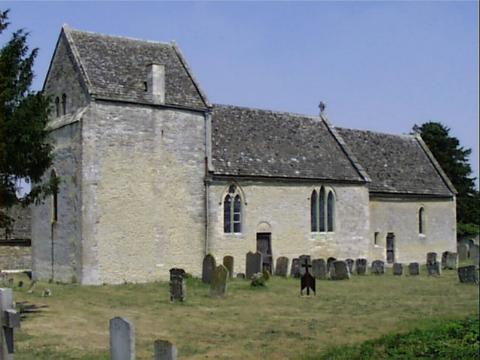
Well this church takes some finding, standing as it does beyond a farmyard and reached by a lane and a stile. We wandered around for some 20 minutes without spotting it (or seeing anyone to ask!) in the leafy grounds in front of Broughton Hall and the walled lanes that conect the houses and their gardens.
The church is of considerable antiquity, and consists of an odd low west tower, nave with a north porch and chancel. The nave is the oldest part, Norman work with original north and south doorways (with a tympanum each), one small north window and chancel arch barely 9 feet tall (2.5metres). Other larger later windows have been inserted to varied designs.
The tower is later, transitional work, with a three-stepped pointed internal arch and a west lancet. The upper stage is 19th Century but seems to incorporate ancient two-light openings on the west face. The hipped roof and ?chimney adds to its odd appearance.
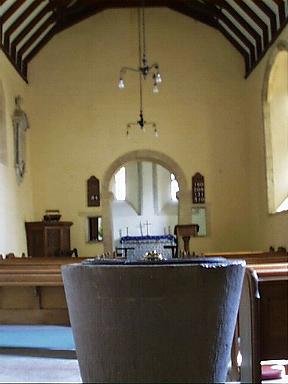
The chancel too is a later addition, and is Early English work of the 13th Century. The east windows are large twin splayed lancets embellished by connected hood-moulding. A view of the altar from the nave is also possible through the two squints (or hagioscopes) which flank the chancel arch.
The font too is Norman with a completely plain tub on a panelled base.
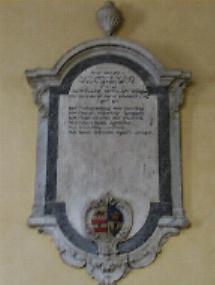
There is not too much else to note inside, but this pretty 18th Century memorial on the north wall of the nave caught my eye.
There is no missing the church at Filkins as it stands alongside the main road through the village, although it is at the southern end of the village and well away from the Hall at the northern end of the village.
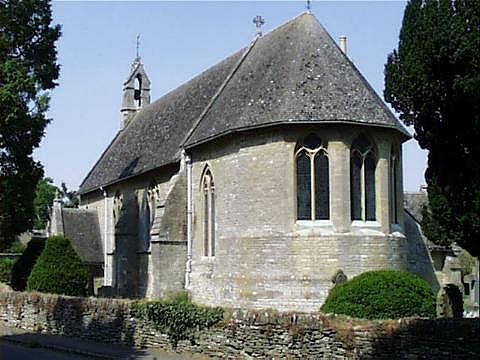
The church was built to the designs of George Edmund Street 1855-7. Plans had been drawn up earlier in 1851 by the local squire but Street, the diocesan architect, was asked to comment on them, and comment he did aplenty! He said he disliked the fact that there was no architect's name on the plans, the roof was too wide and poorly supported, there were no gutters, the vestry had a flat roof and the openings for the proposed bell were too small. The spaces between the pews were too little and he felt the people would be unable to kneel. For the same money such a wide church could be replaced by a nave and aisle for much the same money. Street therefore had to produce a plan of quality, if he was to avoid the same sort of examination and comparism to the original plans! He did.
St Peter's consists of a nave with west bellcote, small south porch, north aisle and an apsidal chancel with north vestry.
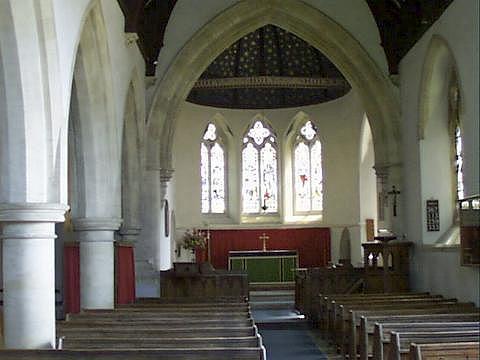
Both the exterior from the east and the interior view to the altar shows the unusual grouping of the three apse windows, close together rather than evenly spaced as was more usual. The ceiling of the chancel is decorated with stars.
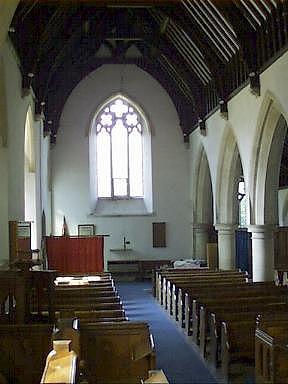
The view to the west end is more typical of churches of the time, and nothing special although the good proportions and roofs are to be seen.